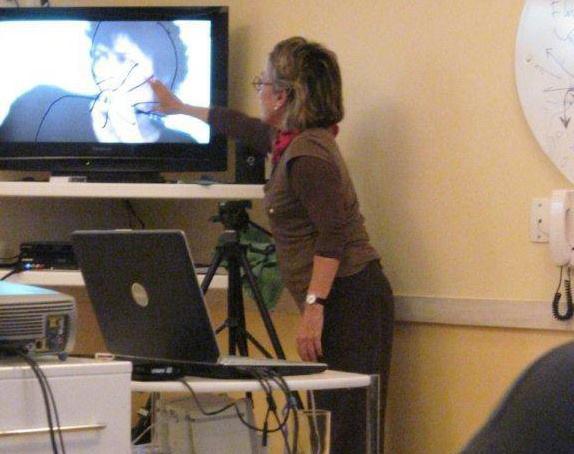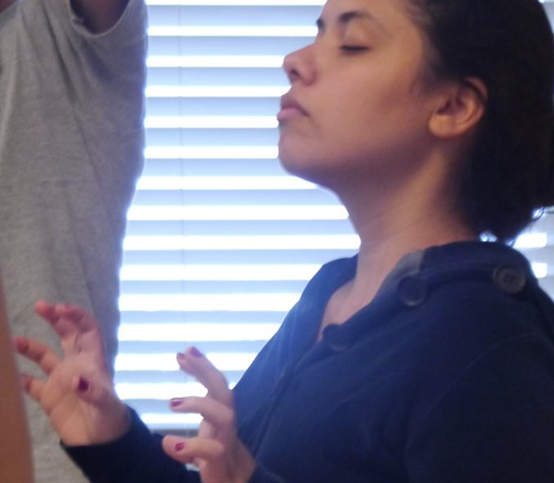Na onda que se levantou: primórdios do corporalismo no Brasil
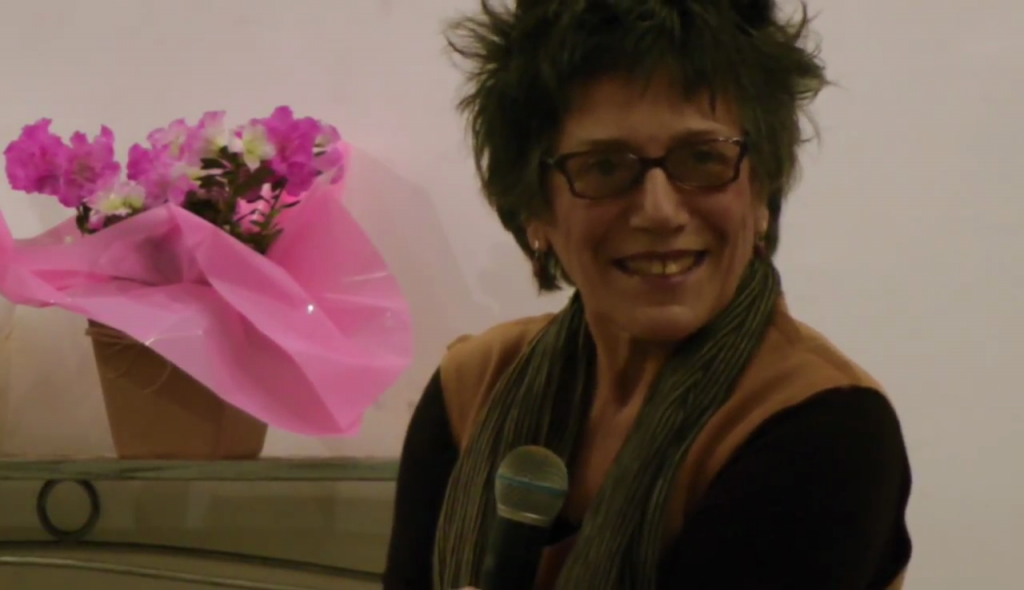
Em 1964, ano do Golpe Militar, eu tinha 21 anos e estudava filosofia na PUC de São Paulo. Minha primeira filha nasceu nesse ano. Mas já em 1966, J. A. Gaiarsa anunciava para o mundo brasileiro, em uma pesquisa da Revista Realidade, leitura imprescindível para pessoas esclarecidas, como já se comportava a juventude diante do sexo, depois da introdução da pílula anticoncepcional. Uma metamorfose se anunciava para a classe média brasileira. Nos filmes de Goddard, que eram assistidos em transe no cine Marajá da Rua Augusta, corpos e comportamentos parisienses de jovens sexuados e politicamente rebeldes, convocavam identificação e mudança. Caetano Veloso, chamava para algo semelhante, no Brasil, com Alegria, Alegria, em 1967. As forças conservadoras apertavam e destruíam as vidas, mas havia, ao mesmo tempo, uma outra força que tirava todas as coisas do lugar irresistivelmente.
Fui de imediato contaminada por aquela força.
A garota rebelde, desadaptada socialmente no ambiente da classe média dos anos 50, precocemente sexuada para sua época, encontrava seu cardume.
A cada dia uma nova mudança de visão das coisas e de comportamento se apresentava. E finalmente fui tragada para dentro da imensa onda que se formara no Brasil. Mas a identificação com os valores da Contracultura só veio um tempo depois.
Em 1970, eu tinha 28 anos, estava casada e já tinha duas filhas pequenas. Nesse ano, o corpo começara a entrar em cena no Brasil com o famoso Congresso de Psicodrama que acontecera nesse mesmo ano no MASP e Gaiarsa, em seu consultório, na esquina da Rua Araújo com a avenida Ipiranga já praticava grupos terapêuticos. Esse foi o ano do sinistro Campeonato Mundial de futebol em que o Brasil foi campeão.
Os grupos do Gaiarsa acolhiam as pessoas nesses tempos terríveis. Lá as pessoas se encontravam, pela primeira vez viviam em seus corpos, falavam de si, experimentavam emoções, dramatizavam sonhos, comportamentos e situações de vida. Era tudo muito intenso e cheio de sentido. Na calada das noites da Ditadura e na intimidade dos ambientes fechados, começava ser tecida uma cultura psi que viria a transformar a subjetividade da classe média brasileira.
Há um livro, escrito anos depois por Lucy Dias, na época, jornalista da Editora Abril, celeiro de um estilo militante e livre de ser, para homens e mulheres, naqueles tempos negros da Ditadura, que se chama “Enquanto corria a barca”, evocando, sugestivamente com esse título dos Novos Baianos, a velocidade da mudança que já deslizava rio abaixo. Na capa rosa, a foto-montagem de um jovem, metade guerrilheiro, metade hippie, já dizia tudo sobre aquele momento. Naquele inicio de década, havia um corpo, a ser desconstruído e remodelado, na luta armada ou no desbunde.
Percebi ali que para não perder o pé no desmanche cultural que se apresentava, urgia fazer uma mudança corporal em relação ao que me havia antecedido: como ser mulher, como estar na onda das mudanças políticas e de novos comportamentos, como reativar uma juventude tão precocemente capturada para dentro de um modelo conjugal, onde encontrar forças para sobreviver com as filhas fora do casamento. Vi com os olhos da sobrevivência que me cabia fazer uma conversa profunda com aquele modo de me usar corporalmente para estar no mundo. Nessa imigração para longe de um certo mundo mais instituído, mais familiar, em 1970, era o corpo que me guiava. Não podia mais ser de outro modo. Seria o corpo e seu uso que eu deveria abordar para acompanhar a rota da história.
Ao me colocar a questão do corpo, a questão da imagem se colocou logo em seguida. Assim que comecei a lidar com o corpo, me reconhecer como um corpo que se comporta, passei a buscar tudo aquilo que estava disponível naquele momento para agenciar essa transformação. As novas práticas estavam começando a chegar via argentinos, os mesmos que introduziram em São Paulo o Psicodrama moreniano de que me tornei logo usuária. Estes, soube bem mais tarde, foram os primeiros da América Latina, a frequentar o ambiente californiano onde o Movimento do Potencial Humano despontava. Foi através deles que primeiro tive notícia do que se passava em Londres.
Em 1970, todo mundo fotografava muito, captando a beleza selvagem dos corpos que despontava com a Contracultura. Revistas como o Bondinho agregavam fotógrafos inovadores. Essas eram revistas surgidas na esteira da revista Rolling Stones. O rock revelou grandes fotógrafos que registravam as expressões em movimento, o comportamento em transformação. Comecei também a fotografar. As crianças também fotografavam em casa o nosso quotidiano. Tudo era significativo e vivíamos uma aventura naquele inicio dos anos 70 embora o horror estivesse a dois passos de nossas vidas.
Do Tropicalismo, para o contato com Gaiarsa e seu espaço de psicoterapia e experimentação grupal na Rua Araújo, para o mergulho na Contracultura, no Psicodélico e no Zen, foi um salto. Nesse movimento, mudanças corporais imensas estavam sendo convocadas e um mar de imagens corporais, sendo disponibilizadas, pela nova cultura jovem americana. A mutação a ser operada era muito grande em relação àquele modelo da vida dos anos 50 e 60. Esse imenso volume de imagens, sobretudo a paixão por elas que se instaurara, foi fundamental para que os corpos pudessem se desconstruir e se reconfigurar por identificação, com uma outra moda, outros comportamentos, outra atitudes, outras práticas de relação familiar, amorosa, sexual, de trabalho, de dinheiro, de grupo, tudo, tudo.
O “como fazer” cada um desses comportamentos era explícito nas imagens. Os corpos fotografados dessa nova cultura, se mostravam habitando completamente a si mesmos, e não mais se posicionando dependentes do olhar da câmera. A celebrada “naturalidade americana”, a confiança no “direito de ser quem se é”, se apresentava como um novo modo de existir a ser conquistado.
No Brasil, com as novas mídias que começavam a aparecer, então, jornais e revistas independentes, o cinema marginal, as capas de disco, a poesia de mimeógrafo, contaminando as vidas com uma poética da fragilidade, sentia-se o risco e aprendiam-se nas novas formas e usos dos corpos, as novas estratégias existenciais.
O mundo das psicoterapias que despontava era o ambiente da mutação para a classe média. Lembremos que o curso de psicologia em São Paulo, a essa altura, existia há menos de cinco anos, mas a mudança de perspectiva que isso operou na cultura psi preexistente foi radical. As terapias se apresentavam para uma certa classe média, como eu, que se marginalizava, como a única maneira de suportar a desterritorializaçao violenta em curso e os grupos, sobretudo, passam a ser referencias nessa migração. Anos depois, escrevi um poema que me retrata nessa época.
Advertimes
Fui publicitária, redatora,
no tempo em que a Tropicália nos autorizava
a fazer estripulias fora da realidade do mercado,
que despontava sob nossos olhos, no Brasil.
Quando ainda se acreditava ser possível
fazer intervenções criativas na mídia,
burlando a própria mídia.
No tempo em que nossos heróis eram guerrilheiros.
No tempo em que os jornalistas
inventavam modos de passar noticias codificadas.
No tempo em que estávamos debaixo da ditadura militar
e havia a barra pesadérrima da repressão.
No tempo em que existia esquerda.
No tempo em que muita gente
que andava pelas agências de publicidade
era gente que vinha da área de humanas.
Gente que ia em passeata.
Gente que sonhava ser poeta,
artista, fazer cinema, escrever romance,
quem sabe voltar para as ciências sociais.
Alguns que militavam ou haviam militado em algum momento.
No tempo em que trabalhar com publicidade
não era vergonha para a oposição.
Gil tinha trabalhado com pesquisa de mercado na Gessy Lever,
Capinam era publicitário, Macalé fazia jingles,
Décio Pignatari brincava com a linguagem midiática.
No tempo em que Janis Joplin, a plenos pulmões,
animava nossa revolta e a imprensa nanica
nos ajudava a tirar sarro da desgraça.
Eu sentia fazer parte da esquerda criativa
e metia o pau no “sistema”, o dia inteiro,
na agência, com o pessoal.
Era o tempo em que as motos japonesas estavam chegando ao Brasil e eu tinha uma.
Montada nela, singrava o trânsito olhando a cidade ,
vendo pessoas de mil mundos levando suas vidas,
panaméricas de áfricas utópicas ,
enquanto refletia sobre o mercado
e apreendia as regras do jogo da massificação.
Trinta anos, filhas pequenas na garupa,
em meio a muita angústia, medo, o chão fugindo debaixo dos pés vertiginosamente,
vontade de experimentar, muita excitação, o olhar para além da família,
atravessada por todos os lados.
Foi nesse trecho de vida que comecei, já meio tardiamente,
a enxergar os jogos de força
no processo formativo
do tecido social e agir considerando-me como parte.
Nesses anos cruciais para o Brasil.
Exilar-se existencialmente em Londres, na rota de Caetano e Gil, foi o passo seguinte. E lá, conectar-se com um mundo onde se estava cultivando uma resistência cultural às novas forças do capitalismo que se expandiam, pela celebração do corpo e sua potência, em vez de submetê-lo à violência da Ditadura e da moral cristã, como se fazia em nosso mundo colonial brasileiro, foi finalmente o passo sem volta.
Era aguda a consciência de que uma aniquilação cultural acontecia no Brasil e que a nova colonização do planeta estava se dando em inglês. Meu coração era uma terra seca e eu andava pelas ruas cantarolando Luiz Gonzaga, como Caetano.
Mas ao mesmo tempo, como uma chuva, a nova língua estava sendo absorvida, umedecendo e fertilizando um rebrotar. Escrevo meus diários em inglês, absorvo os verbos e as expressões idiomáticas da nova cultura como se fossem uma língua sagrada, as ações emocionais do corpo são nomeadas em inglês, falo de sentimentos e experiências em inglês nos grupos, faço terapia em inglês, choro, grito, me desespero em inglês.
A cultura com a qual passei a lidar e lutar, para o bem e para o mal, numa infinita antropofagia tropicalista, nos quarenta anos seguintes, estava plantada.
Regina Favre, Junho 2016.
Imagem-tempo e imagem-movimento
Como é interessante enxergar as ações pequenas para entender o fluxo do sentimento, do vínculo, no processo em andamento. Como é forte a hora em que se vê uma mão que se fecha, quando acontece o oscilar de um pé para o outro, a hora em que a boca fecha e abre, que o pescoço cresce e diminui… como isso mostra uma força viva, um pulso, um forma de bombeamento de si no ambiente, com modos estruturados somaticamente de conter em si mesmo a excitação biológica dos encontros.
Estou pensando no exagero motor que existe atualmente em torno da questão do corpo. Os corpos quase viram do avesso para realizar uma performance. Ou, na verdade, para sentirem que existem no visível.
O que procuro mostrar aqui é tão Deleuze em seus conceitos de imagem-tempo e imagem-movimento.
A gente aprende, ao criar uma profundidade somática para a própria forma, a ver as sombras do desejo se movendo no cristal líquido dos corpos… isso é muito diferente das grandes cenas.
O que está sendo enfatizado atualmente como corpo é o corpo muscular. Esse tipo de movimento over produzido no espaço pelas camadas musculares serve a uma dependência da visualidade, gerando uma qualidade histérica da ação.
Quando a gente consegue se manter no pequeno, editar o pequeno, ampliar na tela as imagens de um olhar lentificado, a gente pode enxergar os esboços das expressões e reconhecer os pequenos controles motores subcorticais, indo e voltando nas sequências das formas que se desencadeiam… e imitá-las, mirando-se nelas, lentificando-se, decupando nossas ações ao vivo, desafiando o medo de perder a forma visualmente validada.
Daí, sim, a gente entende, capta, o movimento do desejo formando as conexões, as conexões internas de novas formas, de novos fotogramas de si, de novas direções e conexões externas, nas variações que vão se estabelecendo.
Nessa oscilação que Deleuze chama de “gagueira”, está se construindo algo outro, gerando-se variações de comportamento.
É o que importa. Só assim a gente produz diferença. E diferença não é um luxo, mas uma adaptação própria, mais fina, ao acontecimento.
Deleuze distingue isso nas ideias de imagem-tempo e imagem-movimento. A imagem-movimento se faz diretamente no espaço buscando o efeito dela. Às micro ações sobre si mesmo que geram aparições no espaço, bombeamentos ou pulsos de si, ele chama de imagem-tempo. Com esses conceitos, Deleuze está se referindo ao cinema: os filmes e seus poderes sobre nós.
A visibilidade de um corpo é resultante de ações no campo da gravidade de ações regulatórias sobre si. Essa aparição de um corpo pode ocorrer pelo uso de si apenas a nível de camadas musculares gerando desenhos de si a partir de modelos visuais.
Mas a aparição pode ocorrer (e isso é o poético, o poiético) como uma emergência do pulso profundo expandindo-se em ondas na superfície corporal como uma configuração efêmera.
O pulso profundo é a excitação biológica de um corpo face o acontecimento presente.
Regina Favre
Março, 2016
Uma conversa formativa: o pulo do gato
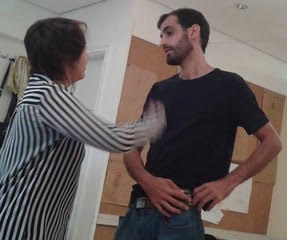
C – Eu queria tentar entender o que é o lugar do mais formado. Eu tenho a sensação às vezes de que você já sabia da questão do C, da minha questão, da S… não sei muito se pelos corpos ou como por onde a coisa vai se apresentando… quero entender como você vai conseguindo tecer esse direcionamento, a condução de uma ação formativa… a hora que você propõe de entrar nessa relação aqui…. ele escolheu A… não tinha como ter sido outra melhor escolha, a que chama a mãe… ai, você está ali e me chama para esse lugar da garota do grupo que vai trazer outro pedaço das forças em jogo… fico querendo entender como você vai construindo esse raciocínio clínico…
Regina – sei onde estou navegando… em várias cartografias ao mesmo tempo, navego em muitos programas, mas quem costura as passagens é a experiência clínica… que me permite fazer intervenção…
C– depois você vai conseguindo contar.. seu pensar isso… e a gente sai mesmo de uma visão individualista e consegue construir uma ideia da vida no social… se fazendo sempre… acho belíssima essa forma de intervenção clínica , e fico querendo entender melhor … sei que não tem como… é uma experiência clinica gigantesca…
Regina– são várias coisas associadas… tenho uma certa familiaridade com o corpo de cada um, não tirei da cartola nada, conheço cada um de várias maneiras, de vários lugares, tenho um vinculo com cada um , curtindo o processo de cada um, me relacionando com cada um…. interessadíssima em cada um… me interesso genuinamente por cada um, isso é um fato absoluto, líquido e certo. Tem uma parte, sim, que é o vínculo, que vai do mais formado para o menos formado. Eu assumo a minha idade, a minha experiência, a minha trajetória e me incluo nesse lugar nas vidas das pessoas que estudam ou se tratam comigo, tenho uma coisa com cada um singular de verdade, com cada um do seu jeito, na sua medida, com suas camadas formadas pela vida. Quando estou com um grupo de ensino, tenho um grande investimento em compartilhar e ensinar as minhas cartografias, biológicas, históricas, sociais, políticas, do desenvolvimento, do vínculo, da anatomia emocional e as referências que vou entregando, dos meus autores, dos meus filmes, livros, histórias, do meu uso da internet, entrego as minhas referências…. e a Lili, ali, transcrevendo ao vivo…compartilhando no facebook secreto, simultaneamente…
Regina– e para exercer essa minha ação do mais formado para o menos formado, entrar na situação de ajuda para que aquele corpo subjetivo amadureça um pouco mais, se organize um pouco mais para estar no presente e conseguir canalizar aquele seu presente para dentro do coletivo, melhor e mais finamente, quem é convocada é a clínica. Parece que eu faço verdadeiras cirurgias.
Aí é que começa uma ação muito precisa. Sei o que está acontecendo anatomicamente, biologicamente, do ponto de vista do desenvolvimento do processo morfogênico, naquela embriogênese continuada daquele corpo em particular. E enxergo o que está acontecendo. Isso é a experiência e é uma experiência viva. Tem a dimensão estética de uma pesquisa, ver como os corpos fazem o que fazem. São as várias camadas ativadas, transitar entre elas, mudar de um registro pro outro… conectar-se com cada uma e convocar sua expressão… por isso não dá para fazer essa ação com muita gente, grupos muito grandes, apenas mobilizando genericamente…
M – é a percepção do outro e ,naquele ponto, ele mesmo vai se percebendo e se apropriando dessa linguagem…
Regina– Isso permite que ele se reconheça. Então, vou conversando com a autoagência do outro, com a capacidade de o outro fazer conexões neuromotoras, esperar que os afetos se desprendam da fáscia, se regulem através dos músculos, se orientem na formação de novas camadas de contenção e expressão de si… manejar na relação a excitação, o timing de cada processo… algumas coisas são rápidas, algumas se dão através da imagem, outras através da sustentação que gera mais firmeza. Várias intervenções que se fazem no processo formativo dos tecidos e que vão se organizando junto com o desejo, com a força da vida para prosseguir, dentro daquela história formativa. Disponibilizo e tenho o maior investimento em que as pessoas captem, aprendam, façam e passem a reconhecer e a experimentar na própria vida, nas relações e ações. Fico contente de poder fazer isso com clareza.
A – durante o tempo do nosso processo de grupo, foi importante para confiar no trabalho de si o fato de você fazer esse trabalho com você também, com muita clareza no espaço do grupo… isso dá uma confiança…
Regina– o trabalho formativo não é confessional, a gente compartilha o processo formativo de si e tem que se fragilizar para prosseguir na construção de um campo. Me recuso ,na medida do possível, a me mostrar idealizada…. uma forma acabada…. ser a dona de uma marca…. me recuso a vender uma verdade… o mercado solicita isso, que a gente vire marca, para poder reproduzir e lucrar, fazer vencer um produto, ser imitado e nunca igualado… isso que fazemos aqui é agir na contramão do mercado… confiar que a gente não precisa impor nada para as redes de conexões crescerem… é possível isso…
C– para mim, o pulo do gato é quando a gente consegue perceber você fazendo, mostrando e afirmando com a sua ação que você precisa se regular para não engolir o grupo, por exemplo…. várias vezes a gente viu você fazendo isso .. isso tira você desse lugar idealizado…e a gente pensa: ela luta com isso na forma dela…
Laboratório do Processo Formativo 2016
Regina Favre
Veja Também:
A real dramaturgia dos corpos: vamos captá-la, contá-la, dançá-la… la-la-la-la…
mais um workshop com Regina Favre e Beto Teixeira
Sábado, 27 de fevereiro de 2016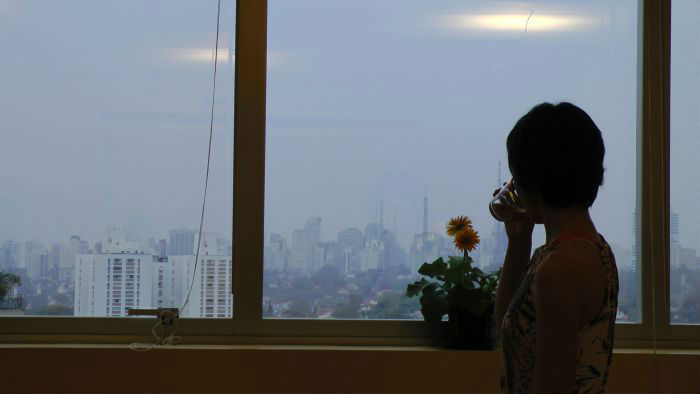
Nos últimos muitos anos tenho pesquisado e desenhado ,com a contribuição preciosa de muitos colaboradores e alunos, cartografias imagens, sensibilidades, conceitos e estratégias para a captação da vida se fazendo nos ambientes e corpos. Nosso continuo viver são performances dos nossos corpos biológicos que crescem, se moldam, se agregam e se conectam, do nascimento à morte, em ambientes coletivos que são físicos, afetivos, linguísticos, comportamentais, políticos, sociais… performamos, vivemos , amamos, sofremos, produzimos, crescemos, morremos em ambientes que são coletivos… somos condensações de forças infinitamente maiores que nós. Entretanto podemos selecionar, recortar, modelar e cultivar com intencionalidade muscular, formas somáticas que produzam diferenças e sentidos que se expressem no visível, se conectem com outros corpos e fluxos presentes, se compartilhem. Aí reside a nossa arte da pessoa comum.
Dentro do nosso programa SÁBADOS, no dia 27 de fevereiro, desejo oferecer, juntamente com Beto Teixeira, a experiência de cartografar nosso imaginário deste ano de 2016 que se anuncia, desenhar como imaginamos nosso funcionamento nesse ano, identificar e selecionar as formas de ser e fazer que pedem passagem, aprofundá-las, muscularizá-las, praticá-las, gerar pequenas coreografias e cenas dançadas com elas… como se fossem fragmentos de sonho
Quem é Beto Teixeira: Um amor pela criacao de Pina Bausch nos aproximou inicialmente. Beto é bailarino, terapeuta corporal em consultório particular e acompanha, há alguns anos, a companhia de Pina Bausch em algumas turnês na Europa…. Desde o ano 2000, vem estudando, pesquisando e trabalhando comigo. Num certo momento deste percurso, concebemos e começamos a praticar a idéia de Dança Formativa com que vamos trabalhar neste workshop.
Regina Favre
Filosofa e psicoterapeuta,
desenvolve dispositivos audiovisuais de pesquisa do corpo subjetivo,
ensinando e publicando, dentro de uma perspectiva formativa.
Data: 27 de fevereiro de 2016
Horário: sábado das 10 às 18h
Local: Laboratório do Processo Formativo
Rua Apinagés, 1100, cj 507 – Perdizes
Valor: 330 reais (metade deste valor na inscrição)
Inscrições: pelo fone 3864-5785 com Célia ou reginafavre@yahoo.com.br.
Vagas: 20
COMPONDO COM POTÊNCIAS IV – 17 de outubro
A quarta edição do Ecosofia – Compondo com Potências se alinha à proposta de Regina Favre, filósofa, psicoterapeuta e pesquisadora que é uma referência em terapias e políticas do corpo no Brasil.
Para pensar as Ecologias dos Corpos, em um sábado, vamos produzir em torno do conceito CORPO COMO BOMBA PULSÁTIL, tomado de Stanley Keleman (Anatomia Emocional. Summus Editorial,1990). Conversar e praticar os conceitos e métodos formativos por meio de vídeos e imagens, focando na produção da presença somática. Cartografar e fazer um estudo ao vivo num percurso por dentro do acontecimento, onde ao mesmo tempo que produzimos, fazemos parte.
PARA UMA ECOSOFIA DO CORPO EM TEMPOS GLOBAIS
Hoje, o ambiente dos corpos não é apenas a natureza ou somente as relações interpessoais dos pequenos ambientes familiares. O mercado global se torna o ambiente onde os corpos nascem, vivem e morrem num contínuo jogo de forças. Diferente do poder moral das famílias e das instituições, o mercado não vigia e pune, mas exerce uma captura das forças formativas nos corpos. Age diretamente sobre as forças da vida e sobre as formas que os corpos tomam para fazer suas vidas, ou seja, sobre os modos particulares de desejar e fazer-se corpo. O mercado inunda nosso espaço corporal através de um duplo jogo: a oferta onerosa de formas de ser e viver corporais e a ameaça de exclusão e desconexão das redes que formam a realidade global, o que se torna hoje o problema central da nossa corporificação.
Desenvolver estratégias para vivenciar-nos como corpos na multidão é fonte de potência. O mercado é regido e explorado por uma pequena rede de poder global, o 1%. E nós, os 99%, somos a multidão. Diferente do que tenta, e muitas vezes consegue, nos convencer o mercado com seu constante canto de sereia, nossa força está justamente em não sermos especiais. Nossa força está em lutar e amadurecer para a evidência de que a vida se dá em rede e que é possível agir como parte. Esse é um conceito pragmático, clínico e ético.
Trazer um caderno e vir com roupas confortáveis.
Data: 17 de outubro de 2015
Horário: sábado, das 10h às 18h
Local: Laboratório do Processo Formativo, R. Apinagés, 1100 cj. 507, Perdizes.
Valor: R$ 200 (metade do valor na inscrição)
Inscrições: 11 3864-5785 com Celia ou reginafavre@yahoo.com.br
Vagas: 25
Na instalação didática: contaminações.
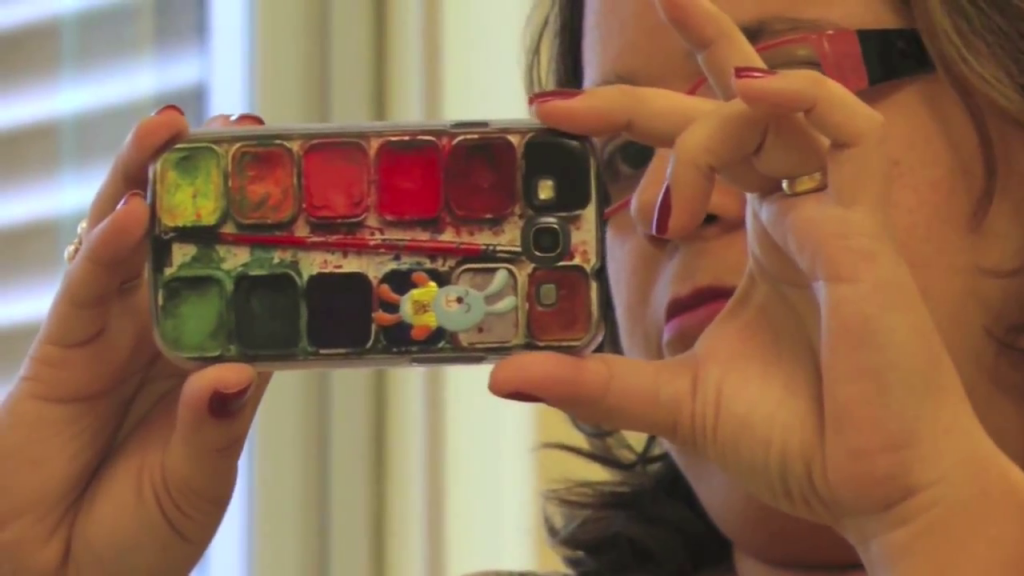
Ingrid – vou mostrar um vídeo que fizemos na Universidade, em Belém, inspirado no Laboratório… Os alunos quiseram criar uma síntese do que tinham vivido no fim de semana com a Flavia Liberman, professora da UNIFESP, visitante do nosso programa… repare na estilização das imagens… editamos com aplicativos do celular. Eu contei que nos seminários do Laboratório do Processo Formativo com a Regina Favre fazíamos vídeos. Pena que a imagem ficou ruim… a gente fez muita coisa e perdeu…
Regina – Não !! É justamente o contrário do fazer gravação limpa e professional… esse recurso é parte do acontecimento… muitos filmes que nos tocam são feitos dessa maneira… essa tecnologia digital dá o tom da intimidade e deixa transparecer o acontecimento da gravação e isso reverbera sobre quem vê.
O que é muito difícil nas gravações informais, é as pessoas permanecerem nelas mesmas e não serem capturadas por imagens dominantes… da celebridade, por exemplo…
Pesquisamos aqui no Laboratório como criar um ambiente de gravação, com a evidência de sua complexidade e inteligência coletiva, que capte as pessoas vivendo a experiência de fazer o que estão fazendo ali. Essa forma de gravação reverbera sobre o ato de fazer e isso transparece na imagem. Essa atitude é uma espécie de distração, um envolvimento profundo no ato de fazer e pensar…
Esse modo de produção de imagem e pensamento nos permite teorizar sobre o embodyment, sobre a imanência , sobre a continuidade e o processo formativo em curso… e receber de volta a própria imagem no processo de continuar produzindo corpo…. porque nós gravamos em cima do ato de fazer, com a transparência e os rebatimentos próprios do ato de fazer, pensar, gravar, olhar, repassar, organizar-se somaticamente… com isso, aprendemos ao mesmo tempo a gramática e a prática formativa dos corpos… na simultaneidade. O material a ser editado, depois, resulta de uma riqueza surpreendente.
Ingrid – antes da nossa gravação, conversamos o quanto estamos na rotina do comportamento e da percepção… que a maioria não usufruía daquela praça onde gravamos… o espaço das árvores, o gostoso de estar junto. Foi a mesma sensação de quando saio daqui do seminário. Aí acabou acontecendo o vídeo.
Regina – com esses equipamentos, tipo IPhone, simples e intuitivos, a produção singular de imagens torna-se mais acessível ainda… mas, também, ficamos muito mais vulneráveis a que toda a situação vire uma coisa glamorosa, estereotipada, por conta da captura do desejo que é continuamente operada sobre nós pela indústria da imagem que nos invade e inunda todo o tempo …
QUEM, muitos quem(s).
Regina: Quem produz? Quem faz o ambiente, na gravação do próprio ato de ocupar o espaço e de se apropriar da própria ação? É como a mão do Escher que desenha a si mesma….
Esse modo de gravação nos permite captar e, ao mesmo tempo, operar a crítica da forma somática do QUEM…. QUEM é o agente, o sujeito dos verbos… os múltiplos verbos e sujeitos, múltiplos agentes formativos de si e de ambientes…
Praticamos aqui toda uma gramática do como colocar-se dentro dos ambientes, evidenciando que somos parte, como produzidos e produtores… esse é um trabalho formativo… no caso, com a produção da imagem…. o ambiente é o mar do acontecimento… são os mares de que os corpos são parte… circunscritos pela nossa escolha. O grupo de Belém, ao sair naquele lugar na rua, fez isso.
Aqui no Laboratório, usamos sempre a mesma sala e evidenciamos, ao mesmo tempo, que o acontecimento é sempre singular, nunca o mesmo. Praticamos uma lógica formativa. Com isso geramos o acontecimento e navegamos ao mesmo tempo nele.
Este texto compõe com o nosso artigo “Na instalação didática“
O que temos a aprender com os bebês?
workshop no sábado, 22 de agosto de 2015
Regina Favre – filósofa, terapeuta, educadora e pesquisadora no Laboratório do Processo Formativo – São Paulo.
Mira Wajntal – psicanalista, membro do Departamento de Psicanálise do Instituto Sedes Sapientiae, autora. Atende adultos, crianças, bebês e famílias.
Estamos em contínua produção de corpo, da concepção à morte, e alimentamos esse processo com a matéria do vivido.
Ter acesso aos modos de conexão com nossos ambientes primários nos ajuda a imaginar, compreender e, sobretudo, organizar somaticamente modos funcionais de ligação com essa realidade que se renova a todo tempo.
Neste workshop, vamos construir um ambiente onde nossas formas básicas vinculares possam se evidenciar para nós e operar em rede.
Vamos combinar noções sobre as vivencias iniciais dos bebês, através de vídeos e narrativas, trazidos por Mira, com exercícios formativos e a experiência do corpo subjetivo em construção, trazidos por Regina.
Data: 22 de agosto de 2015
Horário: sábado das 10 às 18h
Local: Laboratório do Processo Formativo – Rua Apinagés, 1100, cj. 507 – Perdizes
Valor: 350 reais (metade deste valor na inscrição)
Inscrições: fone 3864-5785 Celia ou reginafavre@yahoo.com.br.
Vagas: 25
Comidinhas da chef Monica Mortara.
